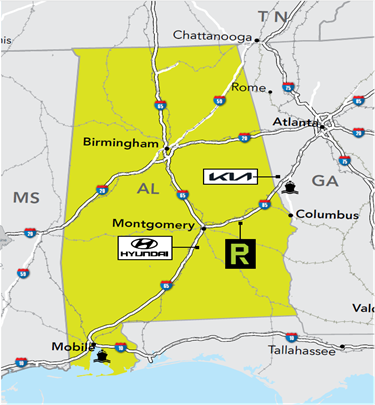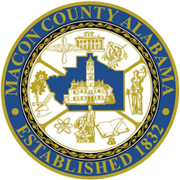Company Site Selection
Location decisions for users are singular opportunities to improve competitive advantage. Finding the optimal location is predicated on both financial and resource optimization around labor costs, power, transportation costs, occupancy costs, taxes, and incentives.
New Deliveries Bring New Opportunities
The I-85 corridor between Montgomery, AL and Newnan, GA (“I-85 South Corridor”) is home to Hyundai Motor Group (includes Hyundai Motor and Kia) South Korea’s largest automaker, ranked third in global car sales. This helps to make Alabama the No.2 auto exporting state and in the Top 5 for auto production which includes more than 150 Tier 1 and 2 automotive suppliers in the state.
Per Cushman & Wakefield research, since the Inflation Reduction Act (IRA) was signed in August 2022, 77 electric vehicle (EV) projects were announced in the U.S., totaling more than $80 billion in investments and nearly 49,000 in projected new jobs. Nearly half of these projects are concentrated in the Southeast. Suppliers and secondary vendors, recognizing the strategic advantage of proximity, are purposefully situating themselves in the same geographic area as plants and auto makers. This spatial proximity not only reduces shipping costs but also increases overall production efficiency in the electric vehicle ecosystem.
Hyundai is capitalizing on the EV production with the addition of the Santa Fe Hybrid, the electrified Genesis GV70 SUV as well as KIA adding the EV9 SUV into production during 2024. Furthermore Hyundai is scheduled to open an EV battery module plant in Montgomery during 2024 and Hyundai has stated that its goal is to be one of the worlds top three electric manufacturers by 2030.
The REAL Park Opportunity
REAL PARK is a 620-acre industrial park conveniently situated between KIA and Hyundai on the I-85 corridor. The optimizing location provides the right combination for automotive and other industries to control supply chain costs through the accessible transportation infrastructure, availability of heavy power, financial incentives from state and county combined with an available workforce.



